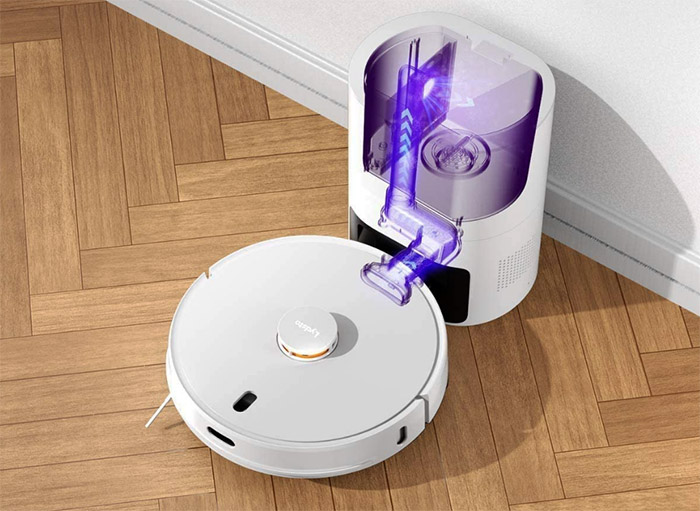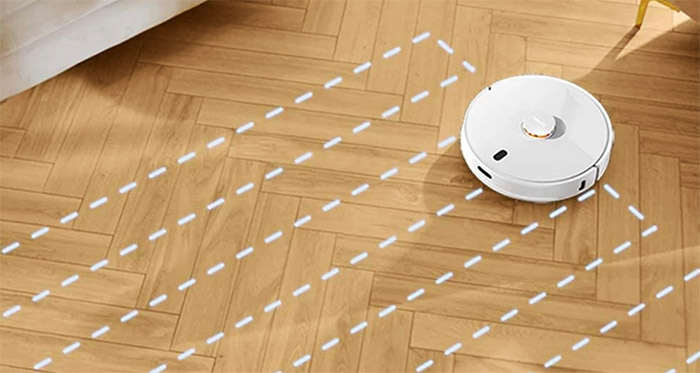Xiaomi has recently released the Lydsto R1 robot vacuum cleaner and, besides offering all the bells and whistles that we got accustomed to over the years with this type of device, this vacuum cleaner almost completely removes the human factor. What this means is that after it has finished mapping the entire house and has the schedule and the no-zones put in place, the Lydsto R1 will clean the rooms and then it will return to its station where it will automatically empty the dust bin. The dust collection station has a powerful fan (50K rpm) and a 430mm short duct to provide a 30,000pa strong suction, therefore ensuring that the bin is properly cleaned relatively quickly (about 12 seconds at 98% efficiency).
And this is a godsend for people that suffer from allergies, such as myself and need to clean the dust bin every time the vacuum cleaner gets full – I do dread shoving my nose into the dust (the manufacturer says that the station requires a monthly replacement of the dust bag). Besides that, the Lydsto R1 prides itself with the ability to keep its suction power (which, in its case, is 2,700pa) unaltered for a very long time, since it solves one of the main factors that do affect it and that’s proper maintenance. Sure, depending on the motor, the power of any vacuum cleaner can decline in time, but the number one factor of a loss in the suction power is debris caught in a tube, improper cleaning of the dust bin and old filters. Since the cleaning is done by the device, it should, theoretically, ensure that the Lydsto R1 will maintain its suction power for a very long time.
Of course, besides the self-emptying station, the Lydsto R1 is advertised as being a fully fledged vacuum cleaner, more than capable to compete with some of the older players in the market. That being said, it relies on the LDS2.0 (Logical Data Structure v2) laser sensor to map and navigate your home (it supports multiple mappings) – it relies on a dual-core Quanzhi MR112 processor and on the Lysmart V5 algorithm to quickly and accurately map the house. And it seems that the sensor can also recognize various types of surfaces – for example, the manufacturer says that when the vacuum cleaner ‘sees’ when it’s cleaning a carpet and when it’s cleaning a hard floor and adjusts the water tank pressure accordingly.
Furthermore, the Lydsto R1 can go above obstacles as high as 2cm and that’s a good thing considering that lots of other robot vacuum cleaners have trouble with slightly elevated surfaces. Just like pretty much all of its competitors, the Lydsto R1 does have a low battery system put in place, so, in case the battery reaches 15%, the vacuum cleaner will immediately return to the dust collection station (regardless of the room where it’s located) and start charging – it relies on the KODENSHI ORA2S01 IR sensor to properly dock the robot to the station. The last important factor of any vacuum cleaner is the sound and the manufacturer says that the Lydsto R1 does have a noise reduction system put in place to help absorb some of the sound, so it’s not that loud when vacuuming (all of these claims will hopefully be properly tested soon).
Note: If you’re interested in the Lydsto R1, you can check it on Amazon and apply the code LYDSTOMC1 to get 10% off.


